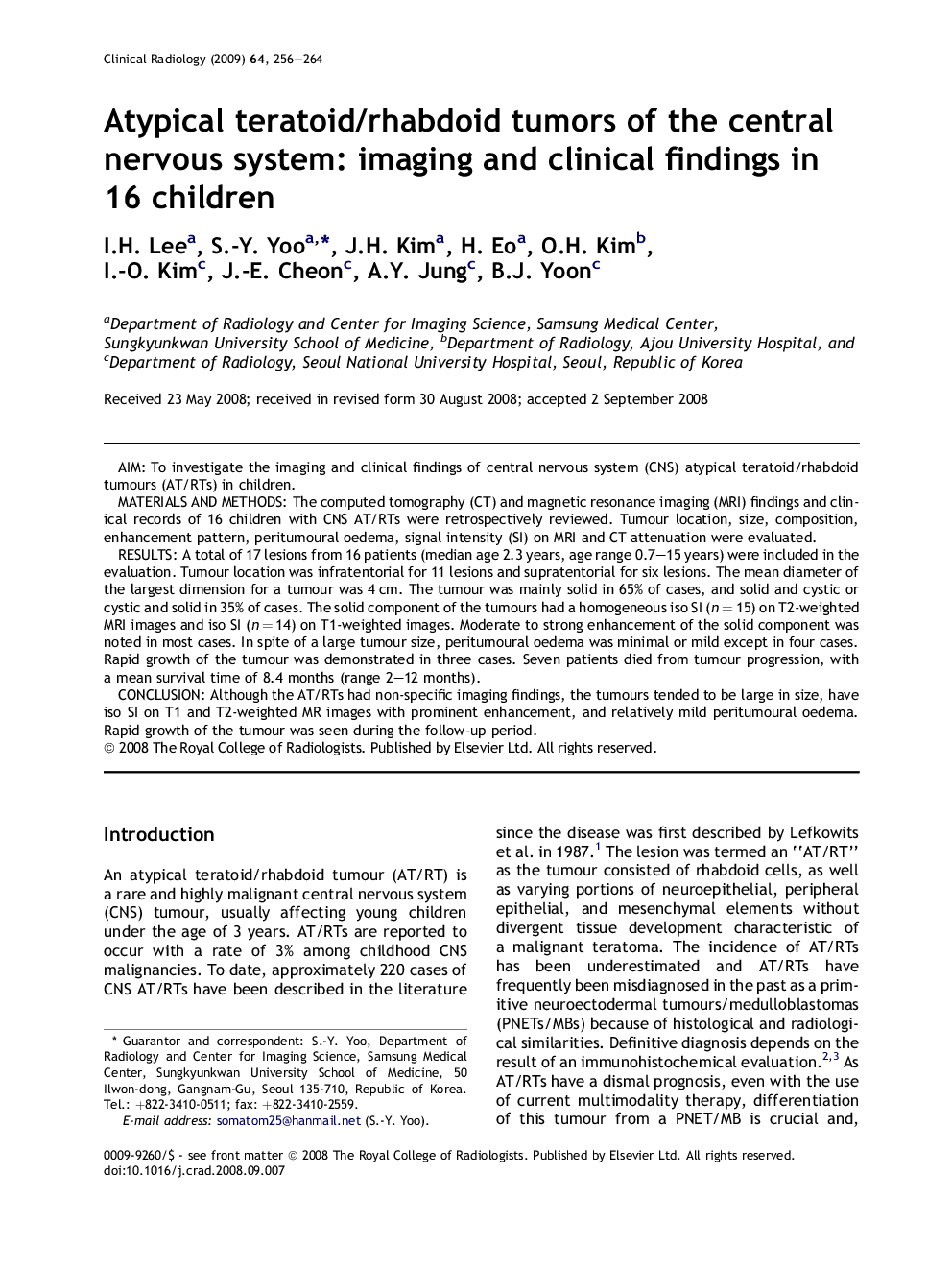| Article ID | Journal | Published Year | Pages | File Type |
|---|---|---|---|---|
| 3983309 | Clinical Radiology | 2009 | 9 Pages |
AimTo investigate the imaging and clinical findings of central nervous system (CNS) atypical teratoid/rhabdoid tumours (AT/RTs) in children.Materials and methodsThe computed tomography (CT) and magnetic resonance imaging (MRI) findings and clinical records of 16 children with CNS AT/RTs were retrospectively reviewed. Tumour location, size, composition, enhancement pattern, peritumoural oedema, signal intensity (SI) on MRI and CT attenuation were evaluated.ResultsA total of 17 lesions from 16 patients (median age 2.3 years, age range 0.7–15 years) were included in the evaluation. Tumour location was infratentorial for 11 lesions and supratentorial for six lesions. The mean diameter of the largest dimension for a tumour was 4 cm. The tumour was mainly solid in 65% of cases, and solid and cystic or cystic and solid in 35% of cases. The solid component of the tumours had a homogeneous iso SI (n = 15) on T2-weighted MRI images and iso SI (n = 14) on T1-weighted images. Moderate to strong enhancement of the solid component was noted in most cases. In spite of a large tumour size, peritumoural oedema was minimal or mild except in four cases. Rapid growth of the tumour was demonstrated in three cases. Seven patients died from tumour progression, with a mean survival time of 8.4 months (range 2–12 months).ConclusionAlthough the AT/RTs had non-specific imaging findings, the tumours tended to be large in size, have iso SI on T1 and T2-weighted MR images with prominent enhancement, and relatively mild peritumoural oedema. Rapid growth of the tumour was seen during the follow-up period.
